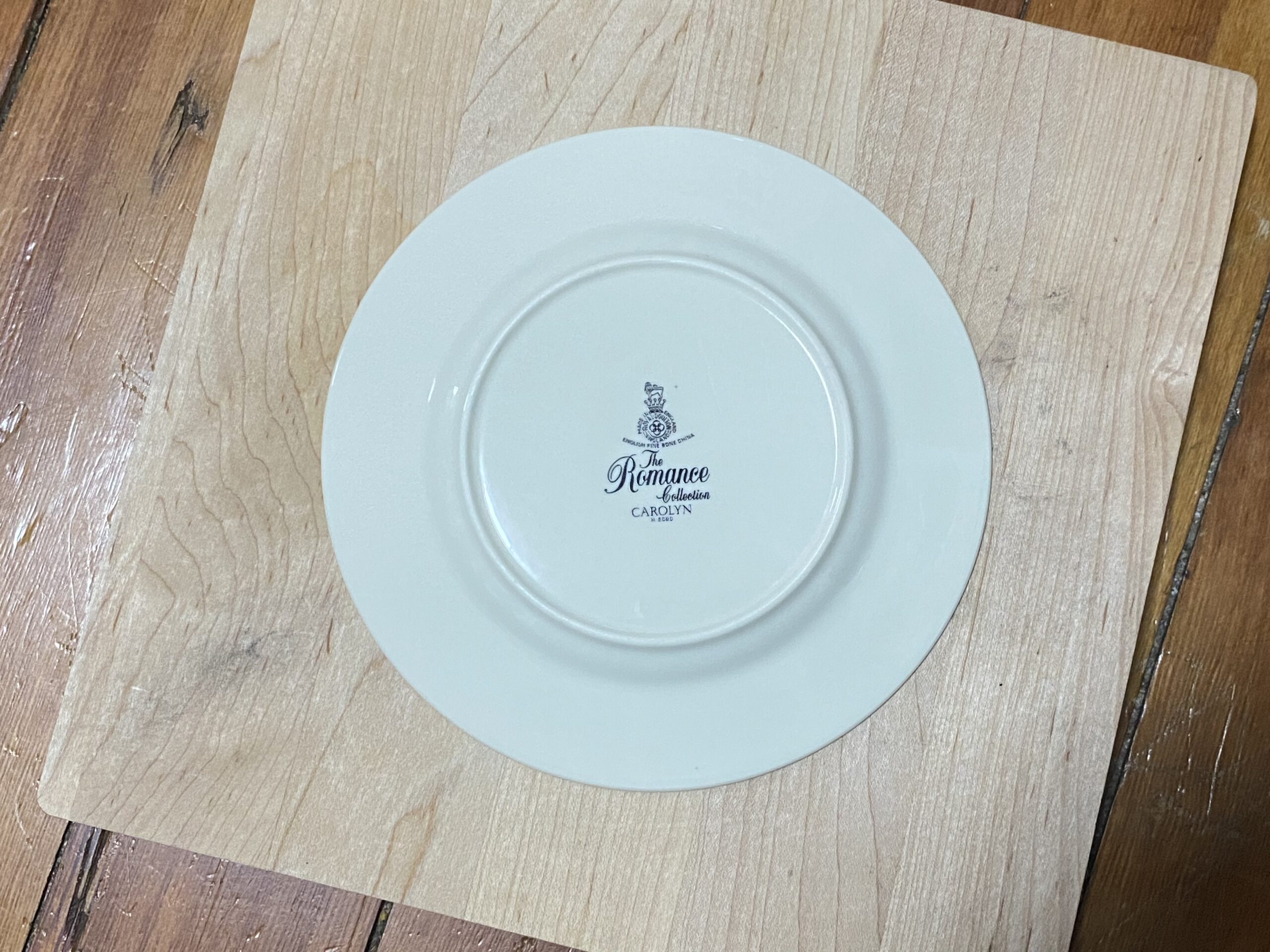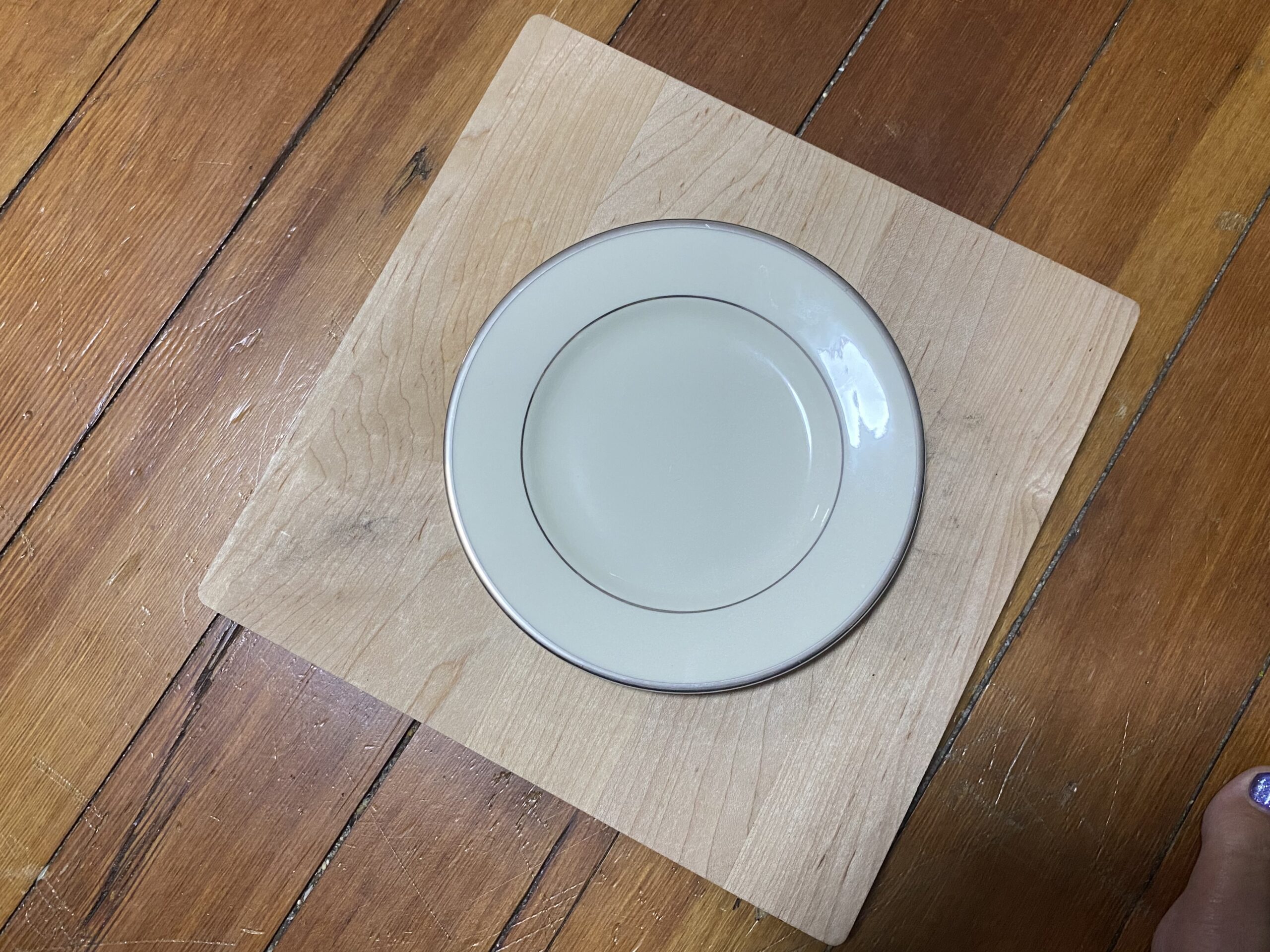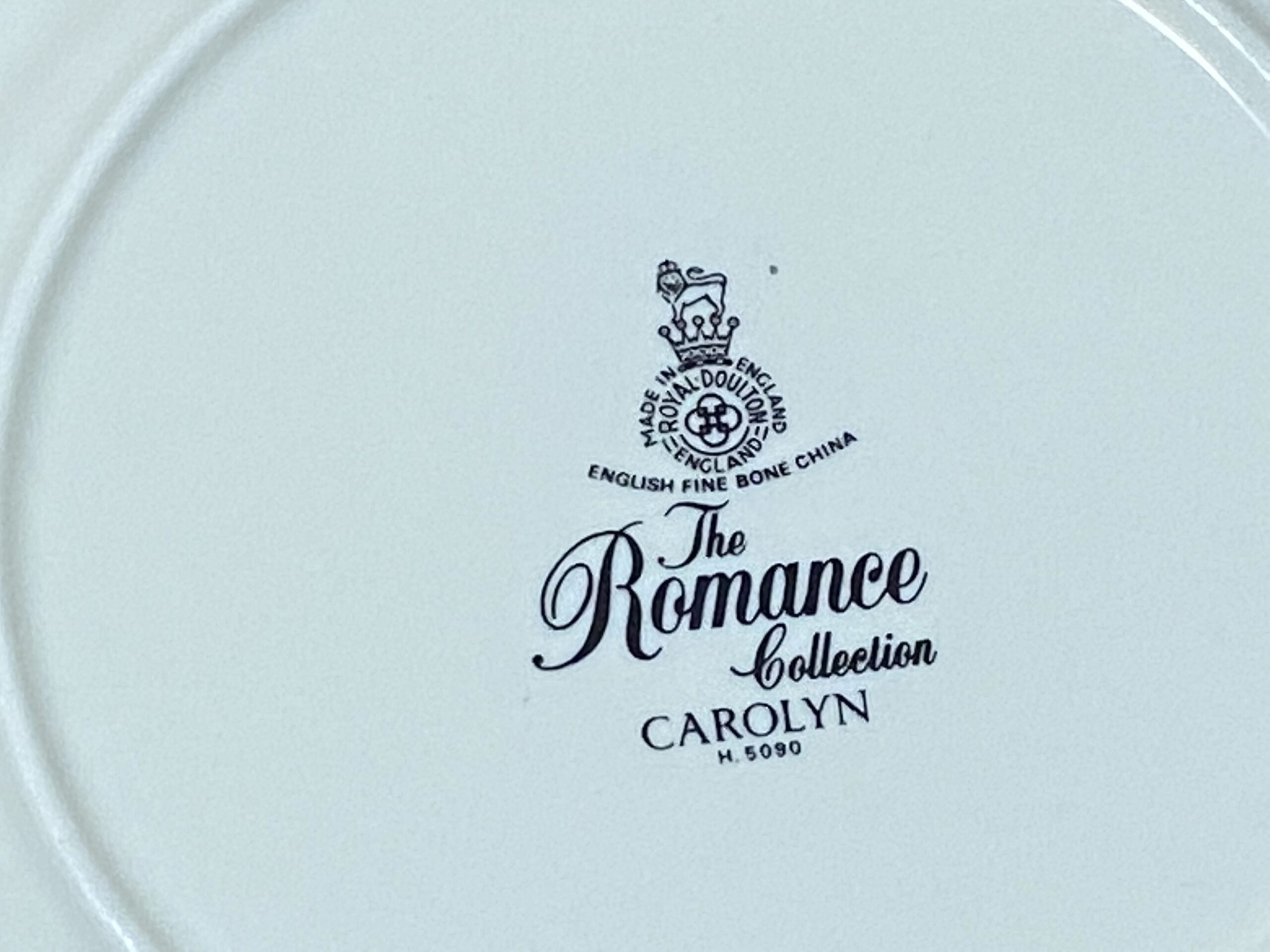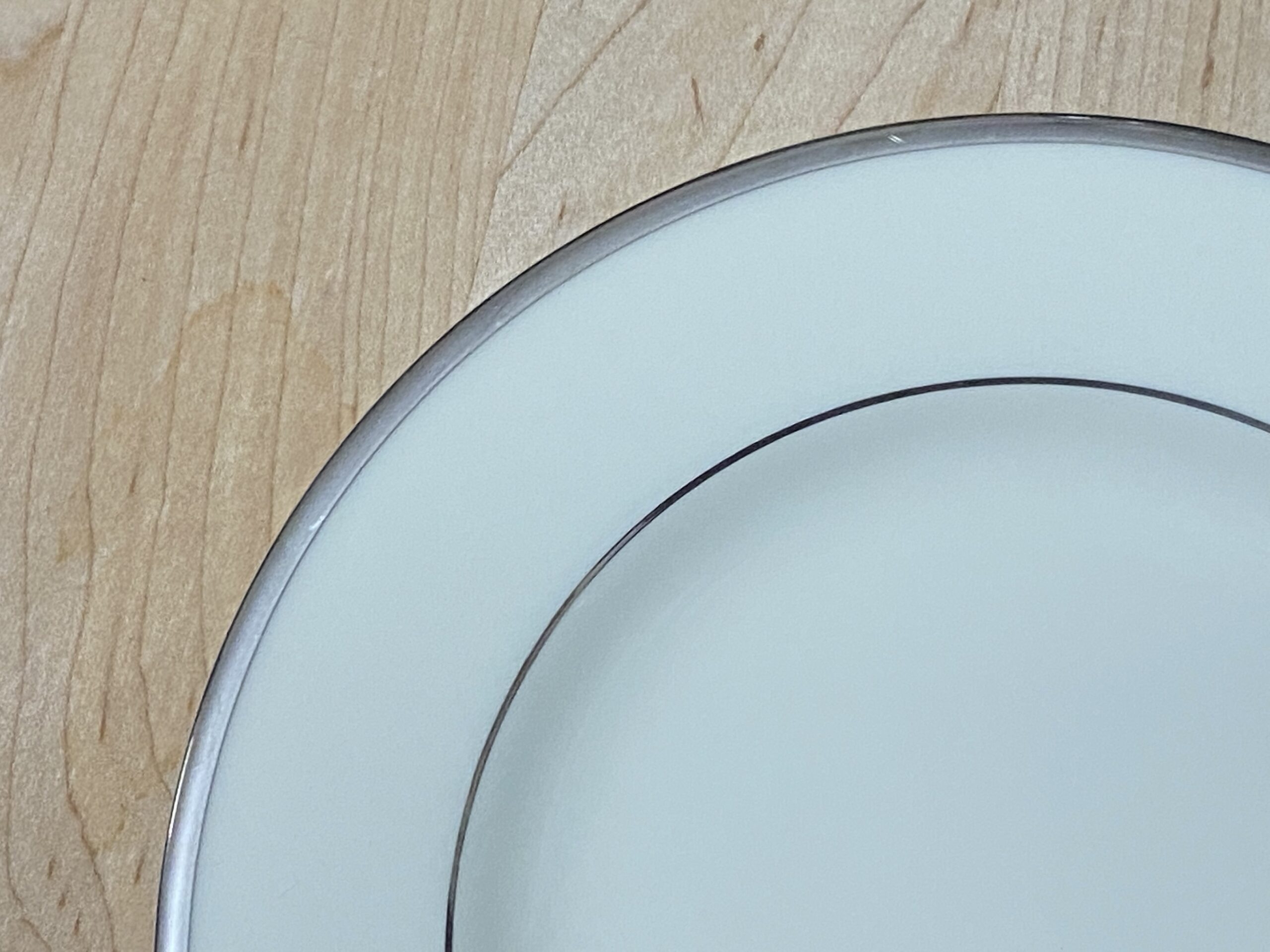Vintage (c. 1980s) Royal Doulton (Made in England) Romance Collection “Carolyn” pattern fine bone china dish: 66,500 ppm Lead on the center of the food surface
Published: Tuesday — July 5, 2022
Given all federal agencies agree there is no safe level of Lead exposure for humans and that in 2008, the Consumer Product Safety Commission set 90 ppm Lead as the limit for allowable Lead in the paint, glaze, or coating of an item intended for use by children — I would not personally be comfortable eating off of these dishes (and certainly would never let any child use one of these).
These Carolyn pattern Royal Doulton dishes may have been safe (determined by independent testing at the time of manufacture to be non-leaching for Lead) on the day they left the factory (c.1980, as reported by the owner), but there is no guarantee that over time, with age and use, they have not/will not become unsafe. This is especially possible if the item has been used with heated foods — or acidic foods, such as tomato-based sauces, vinegar (salad dressings), or lemon (and any other citrus) juice, for example — over the past four(+) decades.
Now that we know for certain (using XRF testing) that there is a very high level of Lead in the glaze of this plate (see specific readings below), it is far simpler and less expensive to buy new dishes than it would be to send a dish like this to a lab for leach-testing to confirm exactly how much of the Lead might be leaching from the dish at this time (and under what conditions) … so many years after they were manufactured! Consequently, in adopting a #KnowBetterDoBetter philosophy and a guiding principle of not allowing any Lead in your kitchen, (and as a great first step in making a safer home for yourself and your family) I would recommend purchasing new dishes if you own these (and not using these for food use purposes at all). You can read more about these concerns specifically in this article — linked here.
NOTE: Vintage (with vintage defined as 20 years old or older) Royal Doulton china tests consistently high Lead — even with manufacture dates through the early 2000s. Given the high level of Lead on the food surface of these dishes (even in plain, undecorated simple patterns like this one) and given my understanding that the Lead is in the clear surface glaze (it’s the reason the finish of the dish is shiny like Leaded crystal), combined with the age of these dishes, I would err on the side of anticipating that they do (in fact) leach high levels of Lead and that these dishes should not — under any circumstances — be considered safe for food use, or even occasional holiday/ special function use. The impact of Lead is cumulative — read more about that here. To see more Royal Doulton products I have tested (with the results reported on this website), click here.
Below are the full test results for the dish pictured.
Reading #1) White center of the food surface of the plate
60-second reading
- Lead (Pb): 66,500 +/- 1,700 ppm
- Cadmium (Cd): non-detect
- Tin (Sn): non-detect
- Mercury (Hg): non-detect
- Selenium (Se): non-detect
- Barium (Ba): 245 +/- 63 ppm
- Chromium (Cr): non-detect
- Antimony (Sb): non-detect
- Copper (Cu): non-detect
- Zinc (Zn): 129 +/- 27 ppm
- Manganese (Mn): non-detect
- Zirconium (Zr): 1,153 +/- 49 ppm
- Indium (In): non-detect
- Iron (Fe): 886 +/- 152 ppm
- Bismuth (Bi): non-detect
- No other metals were detected in consumer goods mode.
Reading #2) Decorative silver-colored/platinum edge of the food surface of the plate
30-second reading
- Lead (Pb): 54,900 +/- 1,800 ppm
- Cadmium (Cd): non-detect
- Tin (Sn) non-detect
- Mercury (Hg): non-detect
- Selenium (Se): non-detect
- Barium (Ba): non-detect
- Chromium (Cr): non-detect
- Antimony (Sb): non-detect
- Zinc (Zn): 145 +/- 42 ppm
- Zirconium (Zr): 1,007 +/- 57 ppm
- Iron (Fe): 659 +/- 187 ppm
- Platinum (Pt): 2,760 +/- 239 ppmGold
- Gold (Au): 6,901 +/- 327 ppm
- No other metals were detected in consumer goods mode.
Reading #3) Black back mark/logo mark of the dish
60-second reading
- Lead (Pb): 38,500 +/- 800 ppm
- Cadmium (Cd) non-detect
- Tin (Sn): non-detect
- Mercury (Hg): non-detect
- Selenium (Se): non-detect
- Barium (Ba): non-detect
- Chromium (Cr): 1,757 +/- 331 ppm
- Antimony (Sb): non-detect
- Copper (Cu): 98 +/- 32 ppm
- Zinc (Zn): 287 +/- 32 ppm
- Manganese (Mn): 512 +/- 189 ppm
- Zirconium (Zr): 1,792 +/- 58 ppm
- Iron (Fe): 6,302 +/- 300 ppm
- Platinum (Pt): 306 +/- 102 ppm
- Cobalt (Co): 2,105 +/- 152 ppm
- No other metals were detected in consumer goods mode.
For some inexpensive Lead-free dish ideas, check out this link.
For those new to this website:
Tamara Rubin is a multiple-federal-award-winning independent advocate for childhood Lead poisoning prevention and consumer goods safety, and a documentary filmmaker. She is also a mother of Lead-poisoned children (two of her sons were acutely Lead-poisoned in 2005). Since 2009, Tamara has been using XRF technology (a scientific method used by the U.S. Consumer Product Safety Commission) to test consumer goods for toxicants (specifically heavy metals — including Lead, Cadmium, Mercury, Antimony, and Arsenic). Tamara’s work was featured in Consumer Reports Magazine in February 2023 (March 2023 print edition).

Never Miss an Important Article Again!
Join our Email List











